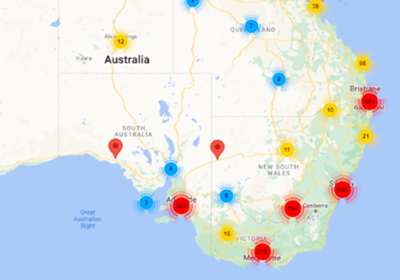
Innovation and entrepreneurship researcher Chad Renando has released an updated map of the Australian Innovation Ecosystem which shows the location and role of over 3,450 actives in the sector in 3,744 locations around the country. Renando, the Managing Director of Global Entrepreneurship Network Australia, has updated the interface which allows people to zoom into the detail of those involved in innovation and entrepreneurship.
Mr. Chad Renando, is a close partner with G20 Entrepreneurship Research Center. While asked the main purpose of making this mapping project, he said, the purpose of this ecosystem mapping project is to gain an in-depth understanding of the Australian innovation ecosystem and its infrastructure within the broader economic sector. It is important to capture this information because it is a complex process to take an idea from seed to commercialisation. This process is also typically beyond the scope and resources of a single organisation. Inevitably, start-ups and entrepreneurs need help to allow them to create the kind of complex value proposition that can only materialize when individual specialist firms combine their skills and expertise. The main aims are included as following aspects:
1. Help new innovators to establish and grow their businesses.
2. Allow entrepreneurs and start-ups to easily and quickly identify organizations that support early-stage entrepreneurs with high growth potential. This could include anything from specialist technology patent lawyers to a software engineer you need to take your product to the next stage of development.
3. To provide insights and evidence for governments at the local, state and national level of the vital contribution of technology, innovation and high growth enterprises to the Australian economy.
4. To identify key barriers to innovation. These insights can be used by governments, educational institutions and policy makers generally, to determine how best to address these barriers. These barriers could be anything from a shortage in local qualified computer engineers to inadequate local co-working spaces or maker spaces to facilitate connections between actors in the innovation ecosystem.
5. Identify the primary industries in each area to highlight opportunities to grow or diversify industry focus.
6. Find ways to assist or strengthen existing businesses by encouraging new synergistic businesses to co-locate.
7. Attract investment in the Australian innovation ecosystem.